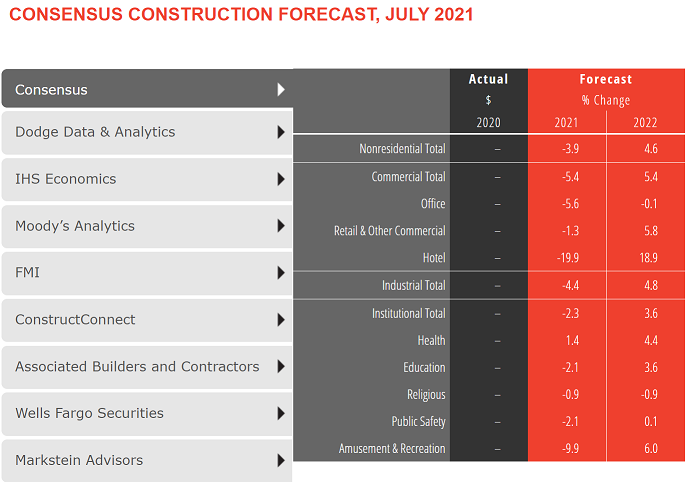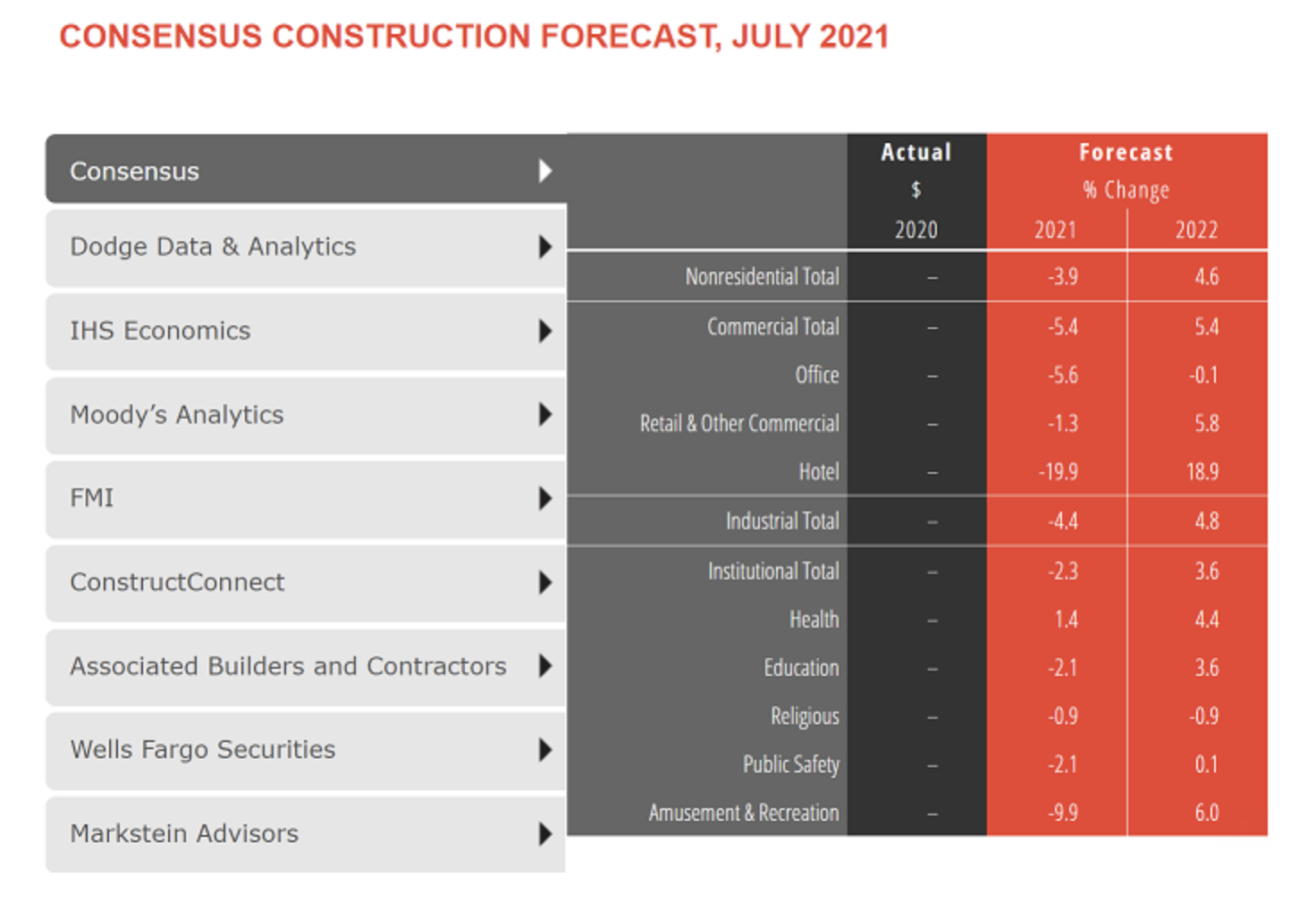Pent-up demand from the pandemic is creating a general spending surge that is helping to improve the outlook on construction spending over the next two years, according to a new report from the American Institute of Architects (AIA).
After nonresidential construction spending declined by about 2% last year, the AIA Consensus Construction Forecast Panel, in its mid-year update, is projecting that spending will decline an additional 3.9% this year, which is an improvement from the forecasted 5.7% decline reported in January. Nonresidential construction spending is expected to increase 4.6% in 2022.
The strongest design sector performers for the remainder of this year are expected to be health care facilities, up 1.4%, while a few other sectors should see only minimal declines, like retail, religious, and education. However, in 2022, virtually all the nonresidential building sectors are expected to see healthy growth, paced by lodging, as well as amusement and recreation, both of which saw steep declines during the pandemic.
“Even while momentum is developing behind most of the nonresidential building sectors, there are several potential potholes on the road to a construction recovery,” said AIA Chief Economist Kermit Baker, Hon. AIA, PhD. “Inflation is back on the radar screen given the surge in consumer spending, as well as the growing federal debt levels. Also, the global supply chain continues to face serious challenges that persist even well after initial pandemic related disruptions have largely subsided.”

Related Stories
Market Data | Feb 17, 2021
Soaring prices and delivery delays for lumber and steel squeeze finances for construction firms already hit by pandemic
Association officials call for removing tariffs on key materials to provide immediate relief for hard-hit contractors and exploring ways to expand long-term capacity for steel, lumber and other materials,
Market Data | Feb 9, 2021
Construction Backlog and contractor optimism rise to start 2021, according to ABC member survey
Despite the monthly uptick, backlog is 0.9 months lower than in January 2020.
Market Data | Feb 9, 2021
USGBC top 10 states for LEED in 2020
The Top 10 States for LEED green building is based on gross square feet of certified space per person using 2010 U.S. Census data and includes commercial and institutional projects certified in 2020.
Market Data | Feb 8, 2021
Construction employment stalls in January with unemployment rate of 9.4%
New measures threaten to undermine recovery.
Market Data | Feb 4, 2021
Construction employment declined in 2020 in majority of metro areas
Houston-The Woodlands-Sugar Land and Brockton-Bridgewater-Easton, Mass. have worst 2020 losses, while Indianapolis-Carmel-Anderson, Ind. and Walla Walla, Wash. register largest gains in industry jobs.
Market Data | Feb 3, 2021
Construction spending diverges in December with slump in private nonresidential sector, mixed public work, and boom in homebuilding
Demand for nonresidential construction and public works will decline amid ongoing pandemic concerns.
Market Data | Feb 1, 2021
The New York City market is back on top and leads the U.S. hotel construction pipeline
New York City has the greatest number of projects under construction with 108 projects/19,439 rooms.
Market Data | Jan 29, 2021
Multifamily housing construction outlook soars in late 2020
Exceeds pre-COVID levels, reaching highest mark since 1st quarter 2018.
Market Data | Jan 29, 2021
The U.S. hotel construction pipeline stands at 5,216 projects/650,222 rooms at year-end 2020
At the end of Q4 ‘20, projects currently under construction stand at 1,487 projects/199,700 rooms.
Multifamily Housing | Jan 27, 2021
2021 multifamily housing outlook: Dallas, Miami, D.C., will lead apartment completions
In its latest outlook report for the multifamily rental market, Yardi Matrix outlined several reasons for hope for a solid recovery for the multifamily housing sector in 2021, especially during the second half of the year.

















